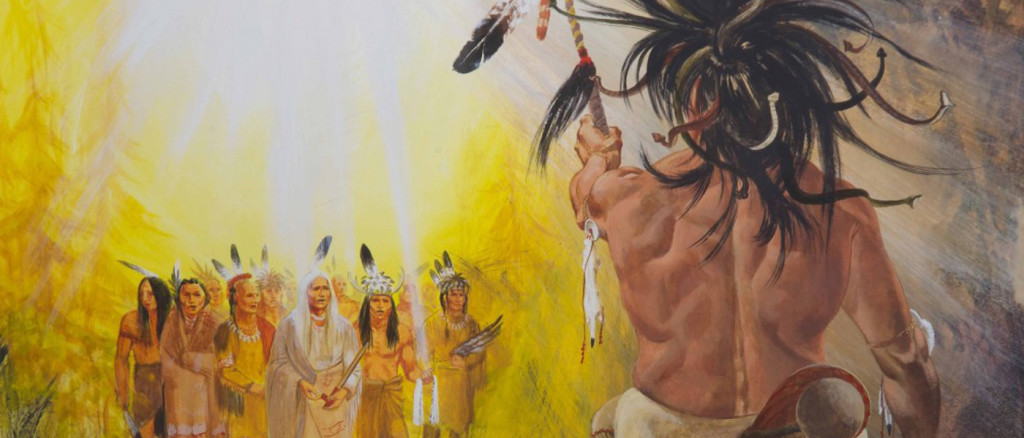Editor’s note: November is Native American Heritage Month. This is the second of four weekly stories to recognize Native contributions and achievements. This story is courtesy of the Onondaga Nation and its website, www.onondaganation.org.
More than a thousand years ago, on the shores of Onondaga Lake in present-day Central New York, democracy was born.
The Seneca, Cayuga, Onondaga, Oneida and the Mohawk people had been warring against each other, and there was great bloodshed. These people (the Five Nations) had forgotten their ways, and their actions saddened the Creator. The Creator sent a messenger to the people so that the Five Nations could live in peace. The messenger is referred to as the Peacemaker.
The Peacemaker carried the powerful words of peace to the Five Nations.
The Peacemaker traveled in a stone canoe to show to these troubled people that his words are true. For the Creator’s message to spread, the Peacemaker sought out the warring leaders of the people of the Five Nations.
In searching for these people, the Peacemaker came upon a woman. This woman had no alliances but provided shelter and food for the men as they passed to war upon each other. The Peacemaker told her about the message and that her actions were saddening the Creator. She agreed to follow the message. The Peacemaker set aside a special duty for the women of the Five Nations (Clan Mother). The Peacemaker then traveled to all of the nations spreading his words of peace.
One of the most feared men of the Five Nations was an Onondaga man named Tadodaho.
Tadodaho was said to be so evil that his body was twisted, and snakes grew from his head. The Peacemaker’s message had begun to spread and was changing the minds of the people.
One of the people who had accepted the good words of the Creator and decided to help the Peacemaker was Haionwhatha (Hiawatha). Tadodaho was determined to stop this message of peace, so determined that he killed Hiawatha’s daughters. Grief stricken, Hiawatha was no longer able to spread the Creator’s words with the Peacemaker. While grieving, Hiawatha found words that would help console others who lost loved ones. He devised a method to remember these words by stringing purple and white freshwater clamshells together on strings. Hence, the first wampum was made.
Once Hiawatha’s mind was clear; he and the Peacemaker were able to confront Tadodaho again. The message of peace was unstoppable. This time, they had the support of 49 other leaders from all of the Five Nations. It is at this point when they “combed the snakes” from Tadodaho’s hair, and he accepted the Creator’s message and became the 50th chief.
They symbolized this union of peace by uprooting a great white pine tree and threw their weapons of war into the hole, and a mighty stream washed away their weapons of war.
They replanted the tree, and the Peacemaker placed an eagle on top to warn the Haudenosaunee (People of the Longhouse) of any dangers to this great peace. The Hiawatha wampum belt was made to record the event of the Five Nations joining together in peace. Each nation is represented, with the Onondagas symbolized in the great white Tree of Peace.
After the tree was replanted, the Peacemaker said: Under the shade of this Tree of Peace. . . there shall you sit and watch the Fire of the League of Five Nations. Roots have spread out from the Tree of Great Peace. . . These are the Great White Roots, and their nature is Peace and Strength. If any man or any nation shall obey the Laws of Peace. . . they may trace back the roots of the Tree. . .They shall be welcomed to take shelter beneath the Great Evergreen Tree.
The Peacemaker had spread the words of the Creator; this has been forever known as the Great Law. The Peacemaker also showed the new Haudenosaunee people how to continue this process after a leader has fallen. He bestowed the power to select the leaders to the women, namely the Clan Mother. It is the responsibility of the women to look over her people to see who would make a good leader.
Together, the Chief and the Clan Mother work together for the people. The titles of these first 50 chiefs have been preserved by the Clan Mother, as she is responsible for ensuring that the title continues to be used wisely. This process of selecting chiefs has continued at Onondaga for countless centuries and still continues today.
To read the first story in this installment, CLICK HERE



